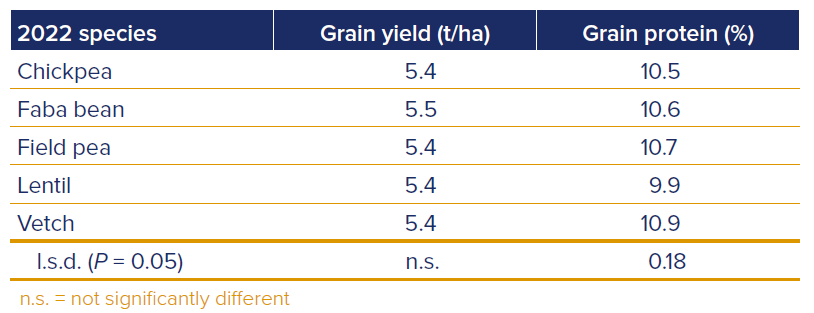Site attributes
Background
The Ganmain pulse trial site followed a very late planted (30 July) wheat crop in 2022 which stayed green well into December. Although some soil moisture was retained from the very wet 2022, the paddock was drier than many other addocks in the area which had crops in 2022 that matured several weeks earlier.
Good rain in March and April enabled all trials to be sown into excellent seedbed moisture, irrespective of sowing date. There was adequate follow up rain in June and July, but then the season turned very dry with only 23 mm of rain from mid July to early October. There was higher than average maximum temperatures in September, reaching 35 °C on 18 and 19 September.

Rainfall and Temperature
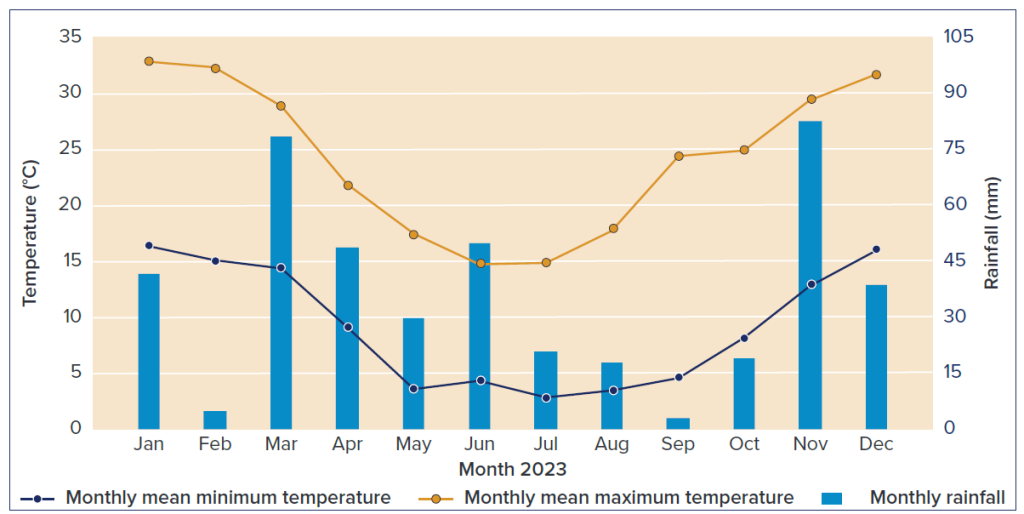
Soil characteristics
The soil is a loam topsoil overlying a clay subsoil. Regular applications of lime have been made in the past decade to address acidity. The pH (CaCl2) was 5.85 at 0–10 cm, and 5.24 at 10–20 cm in autumn 2023. Soil phosphorus levels were high at sowing, and organic carbon levels were low (1.18%). Soil sodicity ncreases
with depth, up to 14% in the 70–100 cm layer.
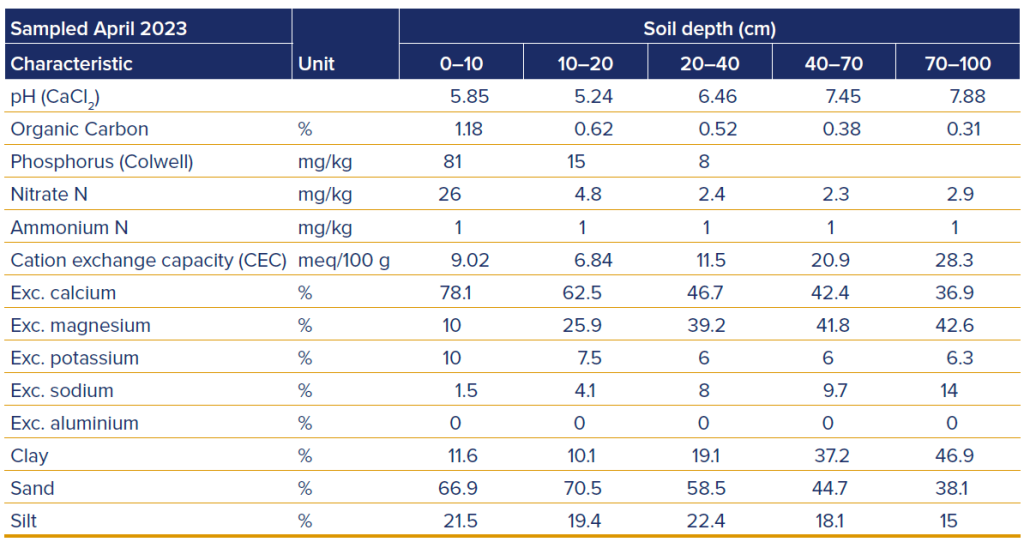
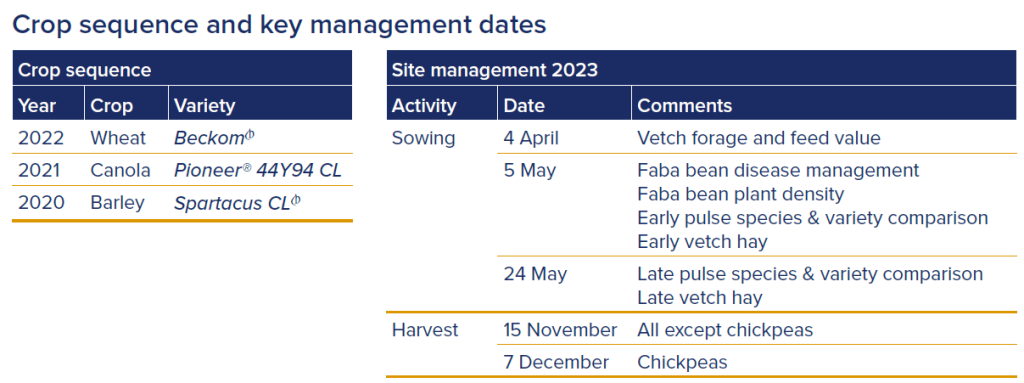

Pulse species comparison, two sowing dates
Key findings
5 May sowing date
- Twenty pulse varieties were evaluated in this trial and three yielded
above 2 t/ha – APB BondiA field peas (2.1 t/ha), PBA AmberleyA faba
beans (2.0 t/ha) and PBA NasmaA faba beans (2.1 t/ha). The highest
yielding chickpea was CBA CaptainA (1.9 t/ha), lentil PBA HallmarkA
(1.0 t/ha) and vetch TimokA (1.1 t/ha). - The largest seeded faba bean varieties were PBA AmberleyA
(67.2 g/100 seeds) and PBA SamiraA (65.6 g/100 seeds) with
PBA Nasma smaller at 59.2 g/100 seeds and FBA AylaA smaller again
at 49.2 g/100 seeds. The largest seeded chickpea was PBA SeamerA
(22.8 g/100 seeds), field pea APB BondiA (17.7 g/100 seeds), lentil
PBA Kelpie XTA (4.6 g/100 seeds), and vetch Morava and VolgaA
(7.2 g/100 seeds). - One variety from each species (two faba beans) was assessed for peak
biomass and seed nitrogen (N) concentration. PBA NasmaA faba bean,
PBA ButlerA field pea and TimokA vetch all produced peak biomass
greater than 8 t/ha. PBA Hallmark XTA lentil had the lowest biomass at
5.4 t/ha. Seed N concentration ranged from 4.8% (Timok vetch) down to
3.1% (CBA CaptainA chickpeas).
24 May sowing date
- Twenty pulse varieties were evaluated in this trial and only the field pea
APB BondiA yielded greater than 2 t/ha, at 2.1 t/ha. SturtA field pea was
the next best at 1.6 t/ha. The highest yielding chickpea was CBA CaptainA
(1.3 t/ha), faba bean PBA NasmaA (1.3 t/ha), lentil PBA Hallmark XTA
(1.1 t/ha) and vetch Morava (0.9 t/ha). - One variety from each species (two faba beans) was assessed for peak
biomass and seed N concentration. PBA ButlerA field pea had the highest
biomass (6.7 t/ha), and CBA CaptainA chickpea and PBA Hallmark XTA
lentil were both close to 4 t/ha biomass. TimokA vetch had the highest
seed N concentration (4.3%) and CBA CaptainA chickpeas the lowest
(3.1%).

Trial details
Two separate pulse species variety comparison trials were conducted, one sown 5 May and one sown 24 May. Each trial had twenty entries, four varieties each from five pulse species – chickpeas, faba beans, field peas, lentils and vetch. All varieties were harvested for grain and assessed for seed size. Select varieties from each trial had further samples taken to determine peak biomass and N fixation, and grain N concentration to determine overall N balance of the different species and varieties.


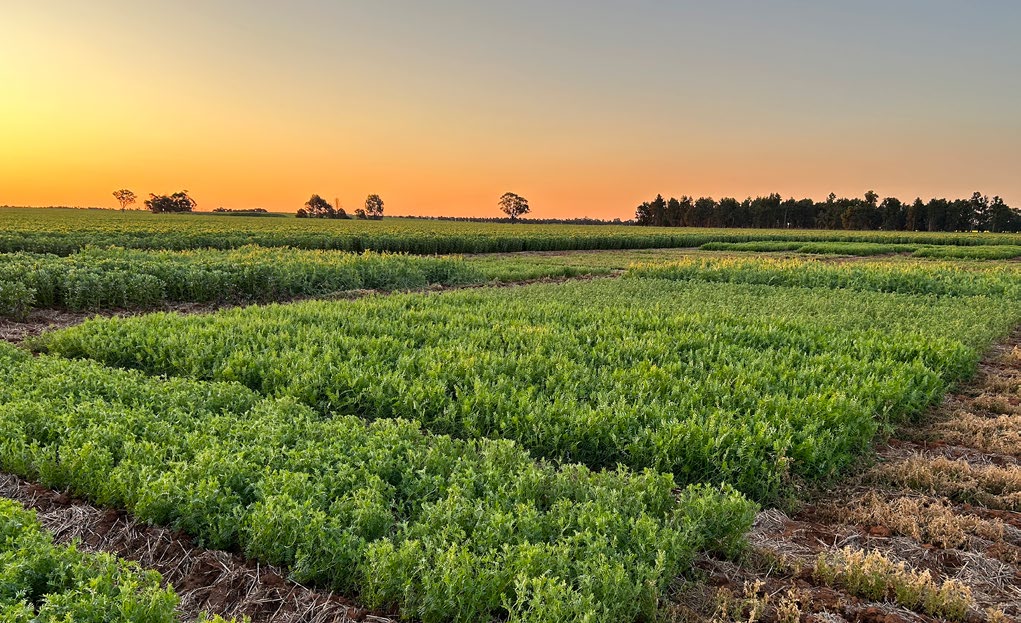
Results
Trial 1: 5 May sowing date
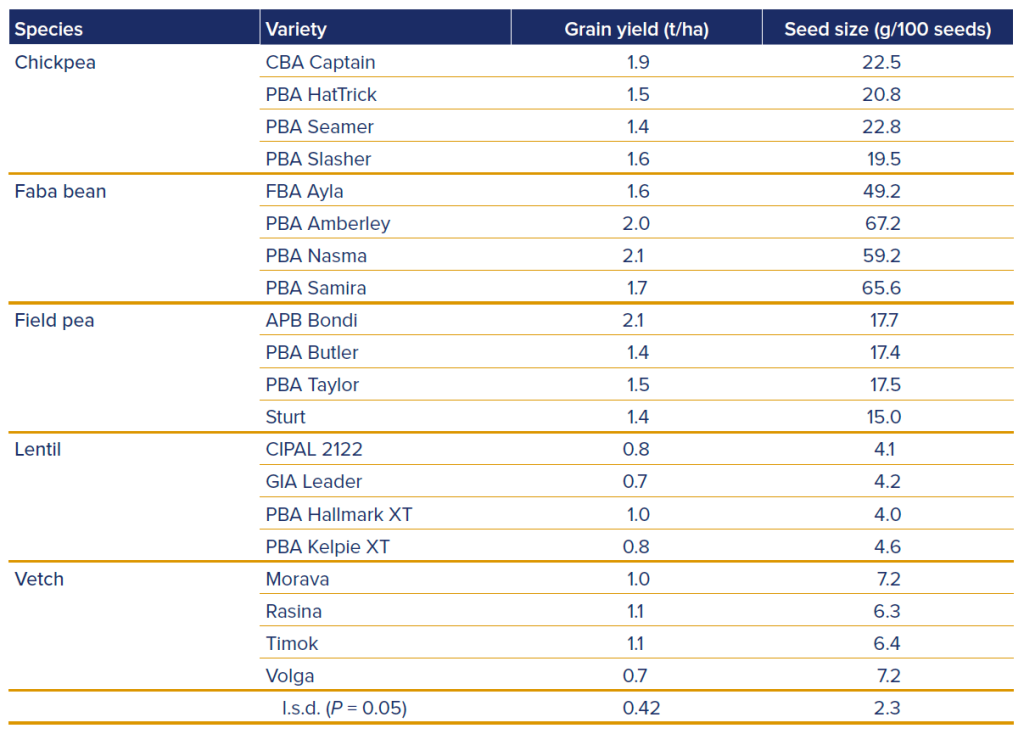


Trial 2: 24 May sowing date
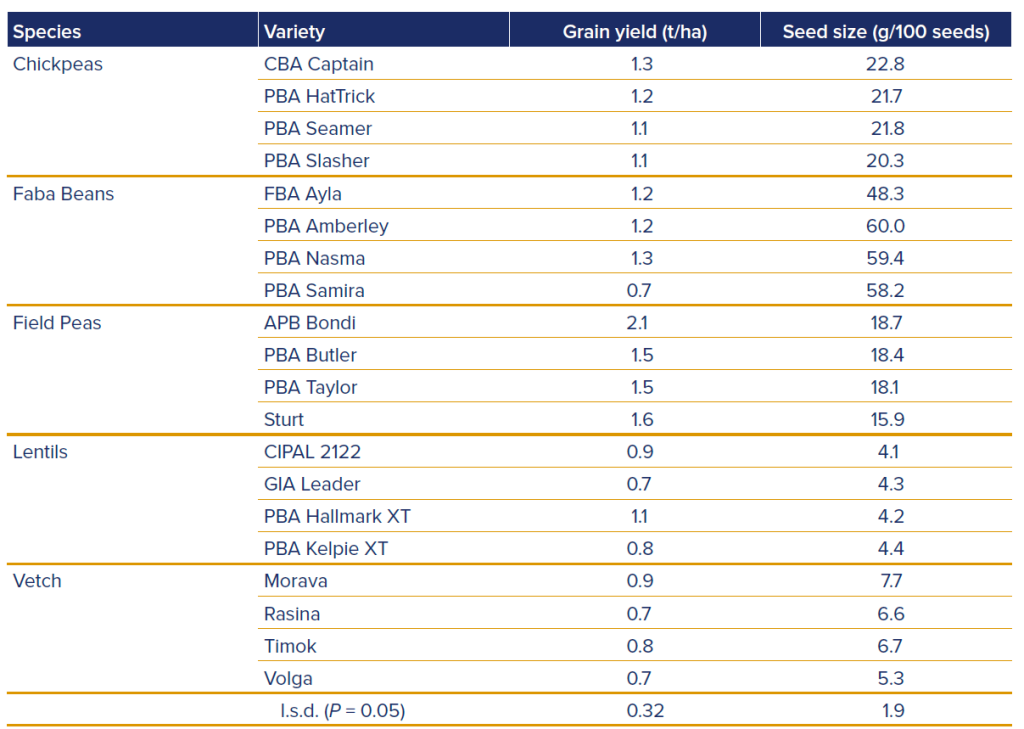

Ganmain in 2023.

Faba bean disease management
Key findings
- There was some chocolate spot present early in the season but disease did not progress up the canopy after mid-winter.
- There was no effect of fungicide treatment on grain yield of PBA Nasma or PBA Samira, but PBA Nasma was slightly higher yielding than Samira.
Trial details
Two faba bean varieties were grown with four fungicide treatments. The varieties were PBA NasmaA from the northern faba bean breeding program (based at Narrabri NSW) with slightly inferior disease resistance, and PBA SamiraA from the southern faba bean breeding program (based at Adelaide SA) with slightly better chocolate spot resistance. The four fungicide treatments were:
Complete – use of regular fungicide applications including high value products, aiming to keep disease levels to a negligible level.
Nil – no fungicide.
Budget – minimal sprays using low cost products.
Reactive – determined by the season, but designed to start later in the season than other treatments, and aiming to stop disease progression following infection in the lower canopy.


Results

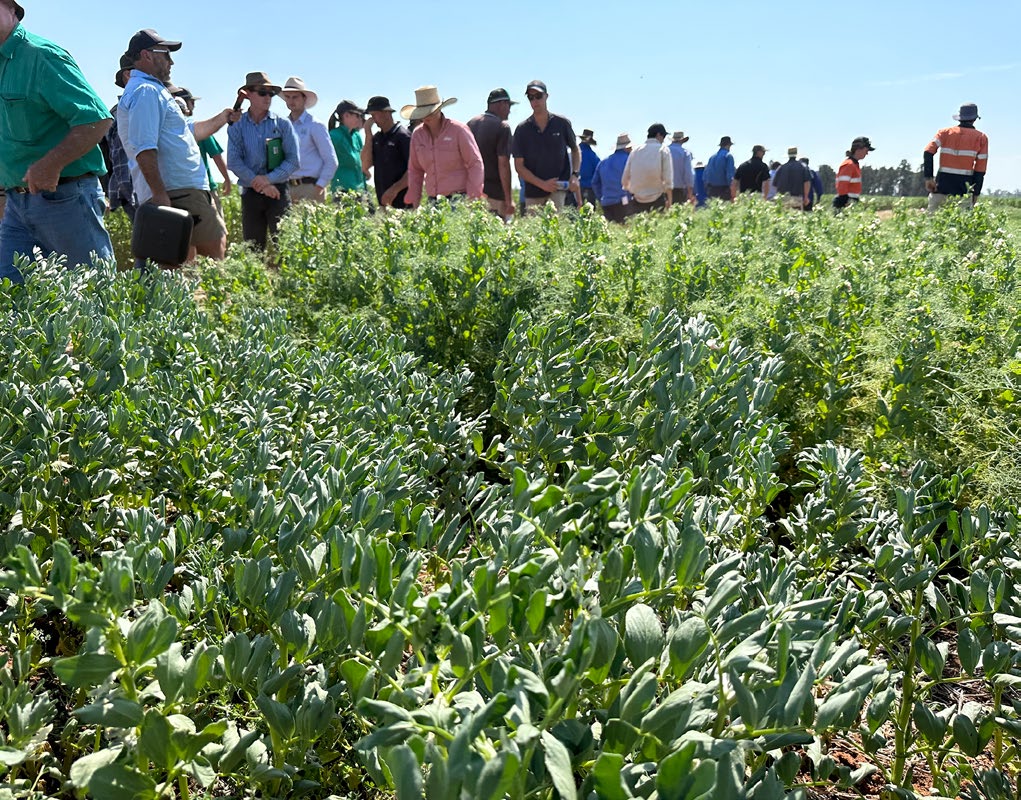
Faba bean plant density
Key findings
- There was an increase in grain yield from 1.0 to 1.7 t/ha with an increase in target plant density from 10 to 20 plants/m². There was no difference in grain yield as plant population increased further from 20 to 40 plants/m².
Trial details

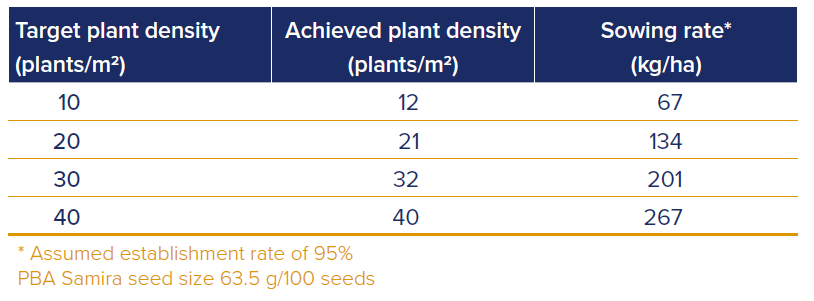
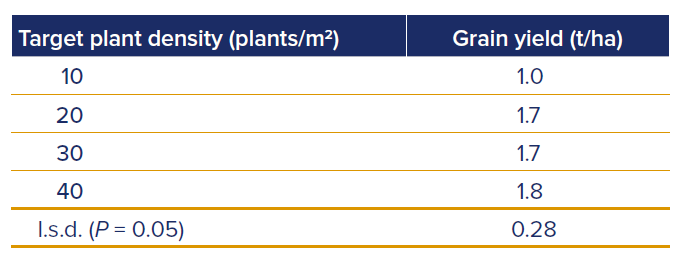
Vetch for forage biomass and feed value
Key findings
- StudenicaA (common vetch) was the earliest variety to reach flowering (14 August) and reached podding 10 days later (24 August). Presto (purple vetch) was only nine days slower than StudenicaA to reach flowering but was 23 days slower to reach podding.
- Morava was the slowest of the common vetch varieties, reaching flowering on 11 September and podding on 18 September. The purple vetch variety Benatas was the slowest variety to flower overall (1 October) and pod (8 October).
- NDVI was used to assess vigour of the different vetch varieties at four dates. Generally, the quicker varieties (e.g. Studenica and Volga) had the highest NDVI values for the first three timings. The purple vetch varieties Benatas and Presto had the lowest NDVI at all assessments.
- All varieties were cut on 8 August to determine forage biomass, and feed value was measured on selected varieties. The vetch was cut again on 27 September to measure regrowth after the first cut 7 weeks earlier.
- Timok had the most biomass at the first sampling (5.3 t/ha). Although Studenica and Volga had more vigour (as assessed by NDVI) their canopy was too rank, they were affected by fungal disease, and lost a significant portion of leaf by the time this cut was completed. The purple vetch varieties Presto and Benatas had the least biomass on 8 August.
- Studenica and Volga did not recover from the cutting process due to their disease and rank growth pre-cutting (their growing points were removed during the cutting/grazing process) and produced minimal regrowth when sampled on 27 September. Regrowth was highest in the slowest common vetch variety Morava (2 t/ha). When biomass from the two sampling dates was combined, Morava produced the most biomass overall (6.9 t/ha), followed by Timok and Rasina.
- Feed value was measured on four varieties (Morava, RM4A, StudenicaA and TimokA) from the first biomass cut. Morava had the best feed value of the four varieties, with metabolisable energy of 10 MJ/kg DM, and crude protein of 24.2%.
Trial details
A vetch variety trial was sown on 4 April. Three replicates of each variety were left uncut to assess the phenology of the eight varieties. Four replicates of each were sampled on 8 August to measure forage biomass and feed value. This sample area was left to regrow and was re-sampled on 27 September.

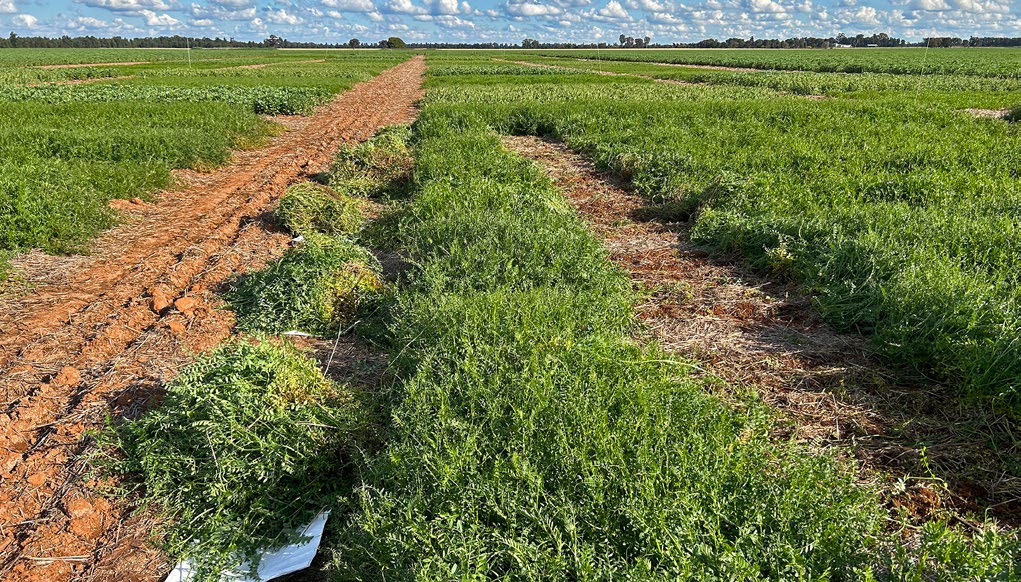
Results
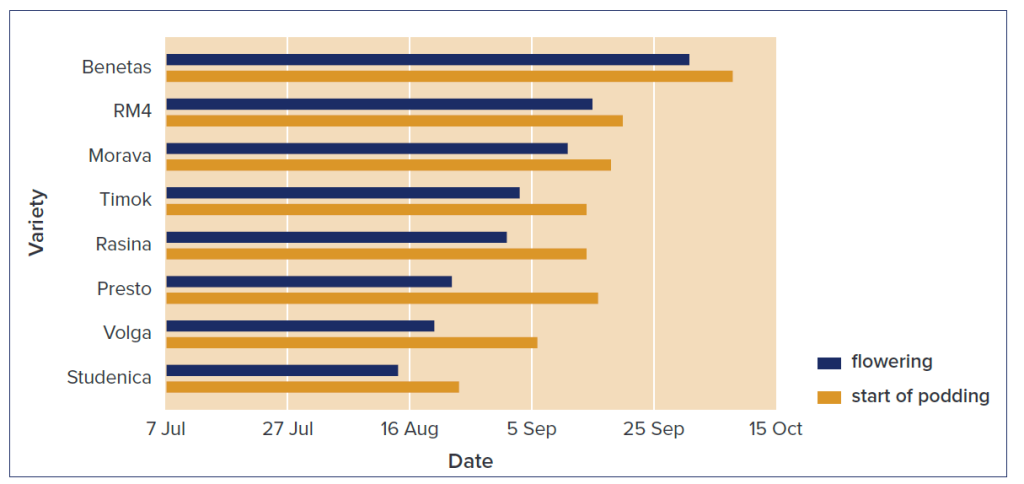
4 April at Ganmain in 2023.
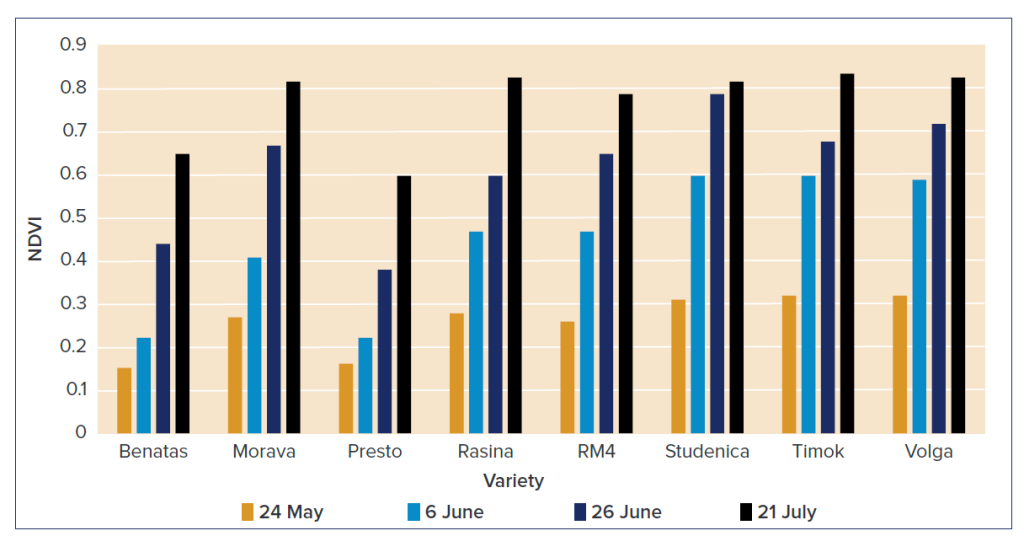
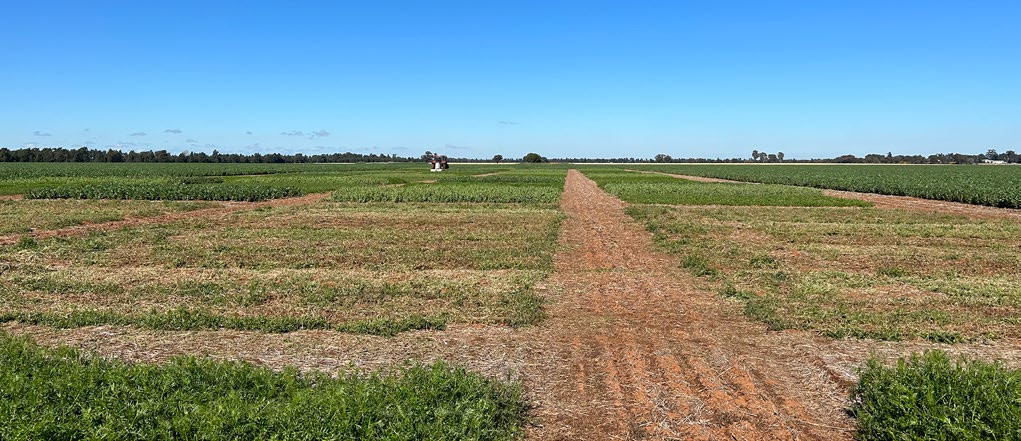

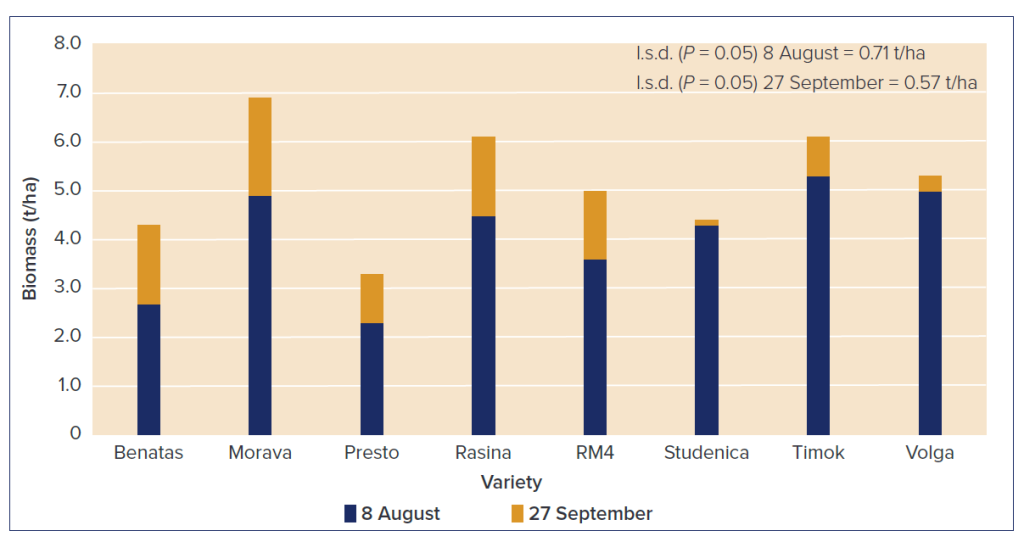
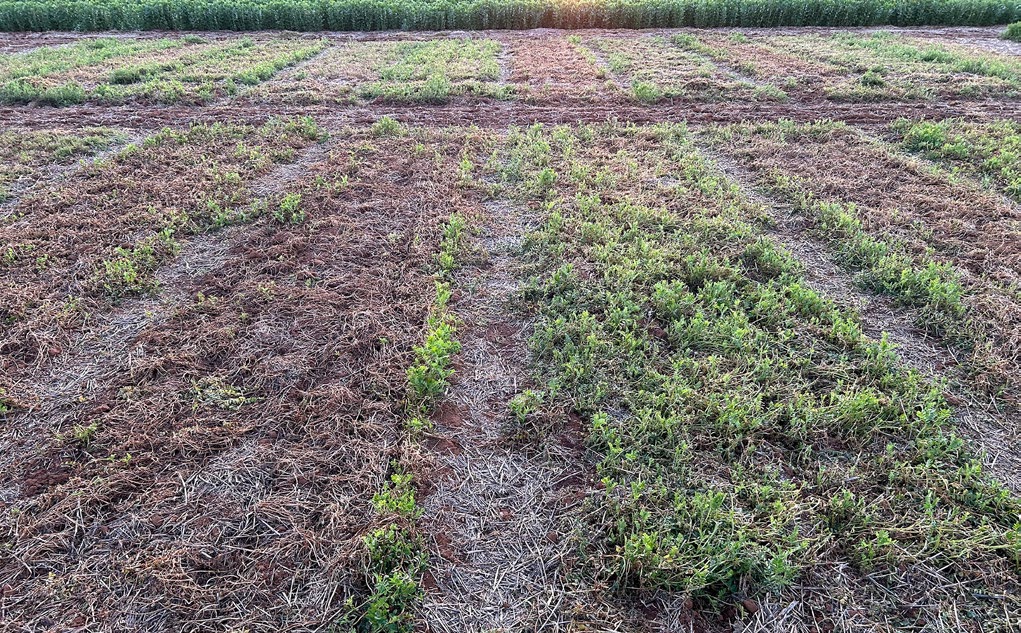
at Ganmain, 24 August 2023
Vetch hay cut timing and biomass at two sowing dates
Key findings
5 May sowing date
- Studenica (common vetch) was the quickest variety to start podding (10
September) while Morava was the slowest common vetch variety to reach
podding (21 September). Benatas (purple vetch) was the slowest variety,
reaching podding on 10 October. - Each variety was cut at start of podding, in line with commercial hay
making practice. Timok had the highest biomass (7.5 t/ha) and Presto
the lowest (4.5 t/ha) of all varieties evaluated.
24 May sowing date
- Varieties in the later sowing trial underwent rapid development and were
only a few days behind the early May sowing to get to start of podding or
hay cut timing. - StudenicaA was the quickest variety to start podding (18 September),
eight days later than the early May sown trial, while Morava was the
slowest common vetch variety (24 September), 3 days later than the early
May sown trial. Benatas (purple vetch) started podding on the same date
as the early May sown trial (10 October). - TimokA had the highest biomass (4.8 t/ha) and Presto had the lowest
biomass (3.2 t/ha) of all varieties evaluated.
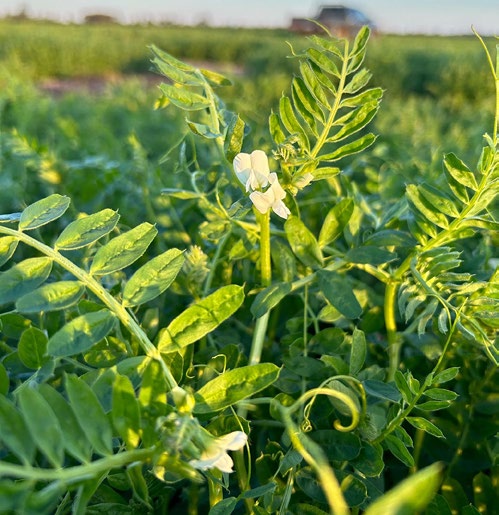
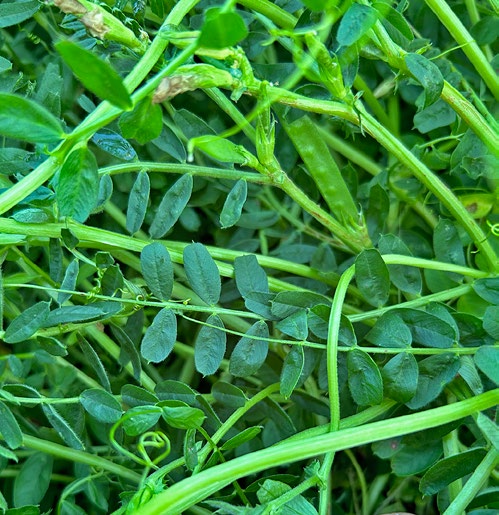
Trial details
Two separate vetch hay trials were conducted, one sown 5 May and one sown 24 May. Each trial had eight vetch varieties which included common, woolly pod and purple vetch varieties. The trial was monitored for podding and once 50% of plants reached podding the variety was cut and biomass measured. The biomass reported is all above ground biomass and may not be completely reflective of a commercial hay cut.

Results
Trial 1: 5 May sowing date
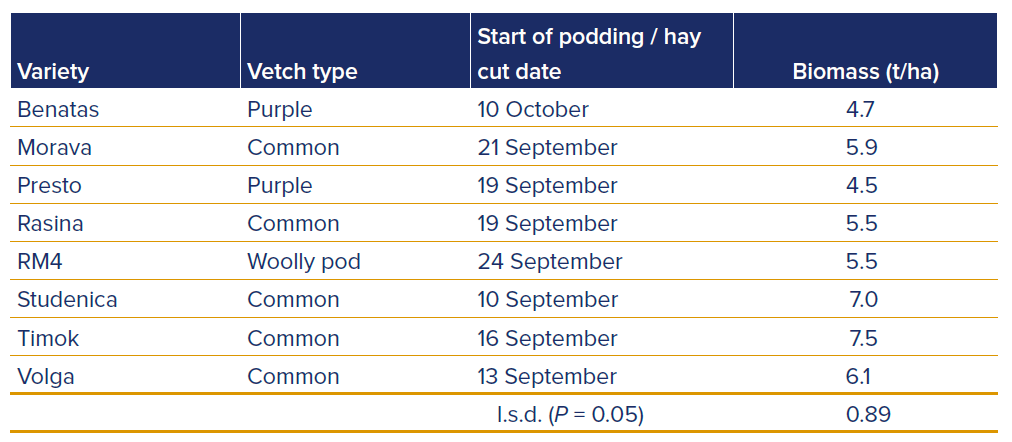
5 May at Ganmain in 2023.
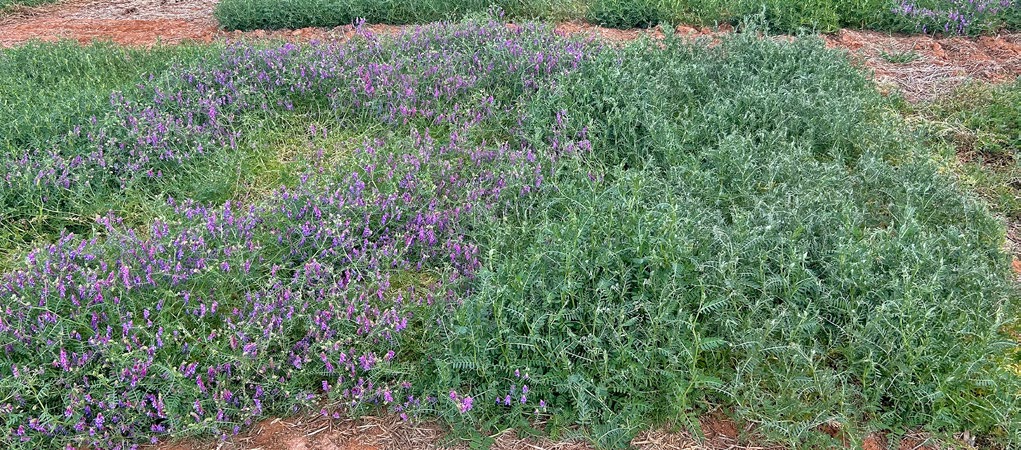
Trial 2: 24 May sowing date
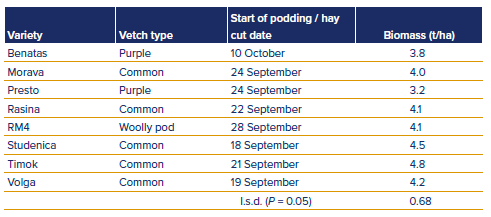
24 May at Ganmain in 2023.

Wheat following 2022 pulse species comparison trial
Key findings
- Pre-sowing soil nitrogen level (0–60 cm) was high after all species,
but was highest after TimokA vetch (184 kg N/ha), and lowest after
PBA Hallmark XTA lentils (138 kg N/ha). - Predicta® B pre-sowing soil disease test results indicated:
- Sclerotinia sclerotiorum and S. minor level was well above a high risk
threshold (risk categories under development) after PBA Hallmark XTA
lentils, and very low risk after PBA SamiraA faba beans. - medium risk level of the root lesion nematode Pratylenchus thornei
after CBA CaptainA chickpeas and TimokA vetch, but low risk after
other species. - levels of other disease categories, including crown rot, rhizoctonia
root rot and cereal cyst nematode, were low or undetectable. - There was no difference in wheat yield following the different pulse
species (average 5.4 t/ha). Grain protein concentration roughly mirrored
the pre-sowing soil N levels, with wheat after vetch highest (10.9%) and
wheat after lentils lowest (9.9%). Wheat was APW grade protein after all 2022 species except for lentils (ASW grade).
Trial details

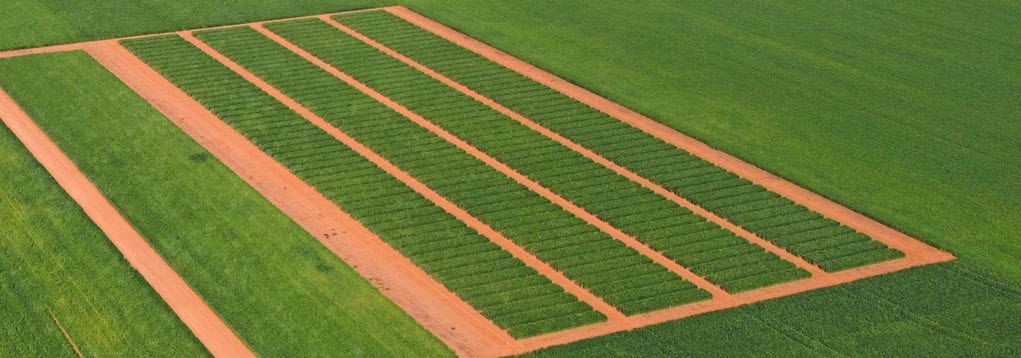
Results

